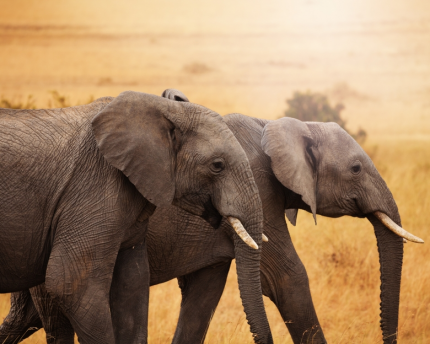
-- Mark Harrison, Sumter, South Carolina
In what some see as another capitulation to the National Rifle Association, the U.S. Fish and Wildlife Service undid an earlier ban on importing elephant parts from Africa, now allowing hunters to get permits on a case-by-case basis.
News like this makes the whole wildlife situation seem grim—and it is. But many scientists and activists are working to secure protections for threatened species and wildlife habitat in the face of assaults by the pro-development Trump administration and Republican-controlled Congress.
In mid-2016, candidate Trump’s talk of reneging on the Paris climate accord didn’t bode well for wildlife facing increasing threats from global warming. After all, many of the 340 species added to the nation’s endangered species list during President Barack Obama’s watch got there due to climate-related threats.
Last fall, the White House denied petitions to add some 25 threatened wildlife species—including the Pacific walrus, Florida Keys mole skink and eastern boreal toad—to the nation’s endangered species list. Officials from the wildlife service cited uncertainty over the future effects of climate change as a rationale.
“You couldn’t ask for a clearer sign that the Trump administration puts corporate profits ahead of protecting endangered species,” says Noah Greenwald of the nonprofit Center for Biological Diversity. “Denying protection for these 25 species despite the imminent threat of climate change and ongoing habitat destruction is typical of the Trump administration’s head-in-the-sand approach.”
The appointment of Ryan Zinke to head the Interior Department was further proof that Trump values resource extraction on public lands over conservation of wildlife.
And the story only gets worse. This January, the wildlife service initiated proceedings to take the Canadian lynx off the threatened list and downgrade other species from endangered to threatened.
The Center for Biological Diversity has led the charge in filing several lawsuits against these moves by the Trump administration. Most recently, the group filed suit in federal court to overturn the White House decision to deny threatened protection for the Pacific walrus. “We’re confident the court will see this…as a politically driven decision that completely ignores the agency’s legal obligations to protect imperiled wildlife,” says Emily Jeffers, the group's attorney.
Meanwhile, the legislative branch isn’t helping wildlife or its advocates. A budget bill going through the Republican-controlled Congress is full of “riders” aimed at cutting endangered species protections for wolves in Wyoming and the Midwest, the greater sage grouse of the Southwest and other iconic American wildlife species. It also cuts funding aimed at bolstering states’ endangered species protection programs.
Wildlife lovers everywhere can keep their fingers crossed that upcoming midterm elections will be a step in the right direction — as long as Democrats can gain seats in the House and Senate — when it comes to saving wildlife that helped make America great in the first place.
Contact:
U.S. Fish and Wildlife Service
Related:
Is global warming harming wildlife?
Battle lines drawn over endangered species
This column was reprinted with permission. EarthTalk is produced by Roddy Scheer and Doug Moss and is a registered trademark of the nonprofit Earth Action Network. To donate, visit www.earthtalk.org. Send questions to: question@earthtalk.org.
Contact StudyHall.Rocks at this address, or like us on Facebook and tell us what you think.